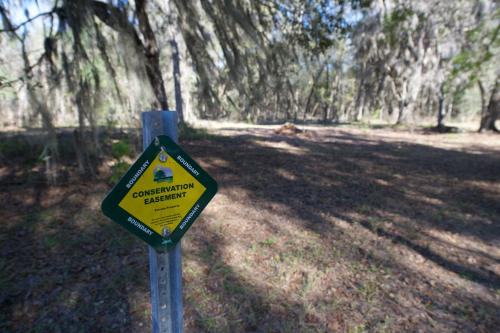In May of this year, I documented an increase in tax sheltering activity that should trouble anyone dedicated to conservation: tax-shelter promoters and some landowners are abusing a tax deduction intended to encourage land conservation. The most recently available IRS data shows that total deductions for conservation easement contributions by taxpayers tripled between 2012 and 2014—rising from $971 million in 2012 to $1.1 billion in 2013 to $3.2 billion in 2014.
But there’s reason to believe revenue losses were even higher in 2015 and 2016, which not only puts the integrity of the provision at risk—it undermines and endangers the efforts of environmental advocates.
Environmental advocates and conservationists have an opportunity to reclaim this benefit and ensure it remains a tool for conservation going forward, but that will require advocating for firmer rules and stronger enforcement for appraisals, a stronger focus on what constitutes conservation and how to promote conservation value, and greater transparency and accountability over these transactions from both donors, appraisers, and land trusts.
How conservation easements work—and how they’re being exploited
When landowners donate development rights to charitable organizations under a conservation easement—a legal agreement that restricts the development or use of the land forever—their donations qualify for a tax deduction proportional to the foregone value of the land (IRC Section 170(h)). Since its creation forty years ago, the tax benefit has become a critical tool in protecting environmentally and historically important land.
But some real estate developers and tax-shelter promoters are exploiting the benefit by donating easements that do little to advance conservation goals—and, in some cases, work against it, or by selling off inflated charitable tax deductions to third-party investors.
But some real estate developers and tax-shelter promoters are exploiting the benefit by donating easements that do little to advance conservation goals—and, in some cases, work against it by selling off inflated charitable tax deductions to third-party investors.
This detailed exploration of the problem by ProPublica/Fortune describes the lucrative operations that have come to represent a large share of the benefits of the tax provision. These transactions bring the tax benefit under the scrutiny of regulators and the public, making conservation efforts difficult for those organizations that do real historic and environmental advocacy work.
Those who are the biggest proponents of the benefit—for the right reasons—ought to voice concerns over this massive and growing tax shelter in order to preserve their own access to this critical policy tool.
How widespread is the abuse?
In 2014, taxpayers deducted $3.2 billion in charitable deduction of conservation easements, which reduced their federal and state taxes by roughly $1.3 billion. Total deductions tripled between 2013 and 2014, and anecdotes and IRS statements suggest the surge is the result of abusive tax-sheltering transactions.
But what’s been happening since 2014? In order to estimate the growth in the tax shelter, we examined one specific abuse of this provision: syndicated easements, in which promoters offer “investors” charitable deductions in return for cash. These transactions are sometimes reported in public filings with the Securities Exchange Commission (SEC) and provide data on the volume of syndicated conservation easements transactions. To identify these deals, we looked at promotional materials from syndicators that identify and track promoters, and compiled a database of security filings related to dubious conservation easement deductions. SEC filings allow us to estimate the aggregate value of syndicated conservation easement deductions, which we then translate into revenue costs using estimates of the tax rate that is likely to apply to the high-income recipients of the deductions. (If you really want to dig into it, you can read more about our methodology here).
Here’s what we found:
- Donations appearing to have little to do with conservation efforts now claim $4.1 to $6.6 billion in “charitable” deductions. We estimate that investments in syndicated conservation easements totaled $484 million in 2015 and $623 million in 2016. Because the tax deduction generates a benefit greater than the value of the investment itself (promotors of these deals suggest the benefit is $4-$6 per dollar invested; the IRS says $9 per dollar invested), the total cost to taxpayers associated with the deals is much larger. Donations related to syndicated deals probably claim the majority of all easement donations claimed by taxpayers.
The chart below illustrates the growth in total deductions for conservation easement contributions reported by the IRS between 2012 and 2014 alongside our estimates of total contributions in 2015 and 2016. We assume that non-syndicated donations are constant at $1 billion per year, and add our estimate of syndicated deals.
- The total revenue loss from syndications is likely somewhere between $1.0 billion and $1.9 billion in 2015, and between $1.3 billion and $2.4 billion in 2016. Because taxpayers participating in syndicated deals tend to be in the top tax bracket (and often in states with income taxes) and participate in the deal to claim the deduction, we estimate that each dollar of charitable contributions likely costs federal and state treasuries about $0.43. In states like California or New York, the revenue cost is closer to $0.48 per dollar deducted. Hence, each dollar invested in a syndicated deal can provide the investor with between $2 to $4 dollars of tax savings.
- The number of promoters engaged in these deals is small and geographically concentrated, but it’s growing and spreading. The 25 promoters of syndicated deals that we identified in 2015 and 2016 represent just seven states. Two-thirds of the companies they manage are incorporated in Georgia, and almost all of the remaining entities reside in Alabama, Florida, and North Carolina. These deals often involve easements related to large real estate developments (include private residential communities, country clubs, and golf courses) or donations in high-cost areas like metropolitan suburbs and resort destinations.
- At a cost of $1.6 to $2.9 billion in 2016 (including syndicated and non-syndicated deals), conservation easements rank among the largest federal environmental and land management programs in the budget. For comparison, the total enacted funding in 2015 for direct purchases of land for conservation (the USDA and Department of Interior Land and Water Conservation Fund) was $306 million. In 2016, the entire budget of the Bureau of Land Management was $1.2 billion, $1.6 billion for the Fish and Wild Service, and $3.0 billion for the National Park Service. In other words, we are spending almost as much on conservation easements as on the entire National Park System.
How to stop the abuse and get back to real conservation
Looking beyond the actions of tax shelter promoters and real estate developers, however, it’s important to realize that they aren’t the only ones to blame. As ProPublica and Fortune outline, abusive easement deals rely on a network of complicit appraisers and even charitable organizations that facilitate the donations, boost their value, and provide the charitable donation. These groups exploit lax and vague definitions of “conservation” that allow golf courses or real estate developments to qualify for benefits on the grounds of their environmental or public benefits.
Environmentalists and activists are making good strides in securing the integrity of the conservation easement deduction. Recently-proposed legislation could help foreclose a specific type of syndicated transaction and would represent a positive step in cracking down on the most abusive deals. But that legislation treats a symptom, not the underlying problem, and is not a long-term fix.
To preserve this conservation tool for future use and to expand its conservation benefits, the conservation community should advocate for additional changes. The Land Trust Alliance, for instance, has developed strong accreditation standards for its member land trusts, but so long as accreditation is voluntary and not mandated by law, any single land trust can circumvent the intended protections.
Many land trusts also voluntarily disclose the value of the donations they receive, but most don’t. Relatively simple disclosures on public returns would provide a tremendous amount of sunshine into the activities of land trusts, illuminating not just bad actors—but also a lot of good ones. Stronger rules for appraisals and greater scrutiny of transactions using, for instance, a panel to appraise high-value transactions (as is used for donations of high-value art) could help. And clarifying the rules defining “conservation purpose,” especially those elements that allow deductions for vague or subjective purposes like “the preservation of open space,” could enhance the deduction’s public and environmental benefits.
For more on policy changes that could reduce the incidence of abuse or improve transparency, visit my previous research on the issue published in May 2017.





Commentary
Estimating the rising cost of a surprising tax shelter: the syndicated conservation easement
December 20, 2017